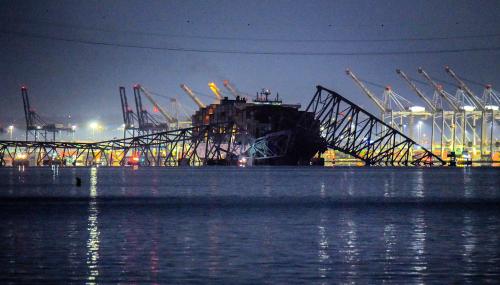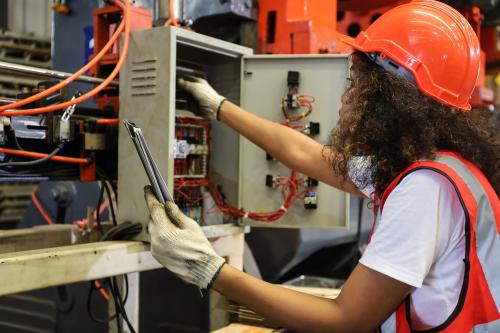Over the last few weeks, federal leaders have been highlighting our pressing infrastructure needs. From Transportation Secretary Foxx’s “Invest in America” bus tour to Vice President Biden’s trips to St. Louis and Cleveland, the administration has emphasized many infrastructure projects critical to our economic competitiveness, including roads, bridges, and ports. Most recently, President Obama joined the parade with a speech in front of the crumbling Tappan Zee Bridge, aiming to streamline the permitting process and pump additional money into these projects.
While making their rounds, federal leaders have also pointed to the 700,000 jobs at stake if we do not find a way to pay for our transportation repairs. Yet, these repeated calls for investment do not always capture the full—and lasting—extent of our infrastructure workforce. Focusing on the direct, indirect, and induced jobs in shovel-ready projects helps explain the immediate losses stemming from persistent federal gridlock, but these estimates undersell the enormous economic costs these shortfalls will cause for years to come.
This oversight is especially apparent when considering the millions of infrastructure jobs at the center of these policy discussions, as our recent report shows.
In total, 14.2 million workers directly support our nation’s infrastructure, most of whom focus on the long-term operation and maintenance of our transportation, water, and energy systems. Spanning across dozens of industries nationally, these workers are vital to every metropolitan economy, from Stockton to Scranton. Beyond the thousands of construction laborers critical to installing our roads and bridges, for instance, millions of truck drivers, cargo agents, and bridge and lock tenders will be moving our nation’s goods on these structures for decades—contributing to efficient goods movement and export-led growth.
Since infrastructure workers tend to earn more equitable and competitive wages, we must also consider the extensive reach of these investments within individual communities. As we plug potholes and fix leaks today, policymakers need to consider the large number of workers making these repairs in the future, who often gain their needed skills from training programs and career pathways at a local level. Unless we invest in our physical structures and workforce needs together, we continue to put a wide range of good-paying jobs at risk.
In this way, short-term fixes do not provide the kind of financial certainty that states and metropolitan areas need. As policymakers in Washington continue to sort out details in a new surface transportation bill—and make progress on measures essential to our major ports and freight corridors —we’re still struggling to identify long-term, targeted solutions. With the Highway Trust Fund nearing insolvency this August, the clock is ticking down as policymakers scramble yet again to find the needed resources to pay for our infrastructure in the coming months, let alone the next few years.
By now, the economic case for infrastructure is clear, and we need to focus on the long-lasting employment opportunities resulting from these investments. As we have learned during Infrastructure Week 2014, it’s time to move beyond the same tired, last-ditch efforts that have held back needed improvements for too long. By drawing from innovative strategies and partnerships across the public and private sector, we can begin to address these issues more effectively and contribute to sustained job growth over time.


Commentary
Expanding the Infrastructure Jobs Tour
May 16, 2014